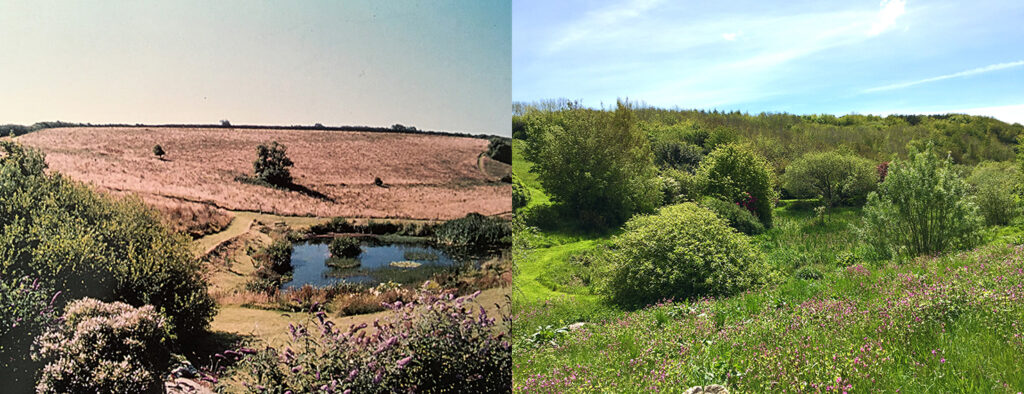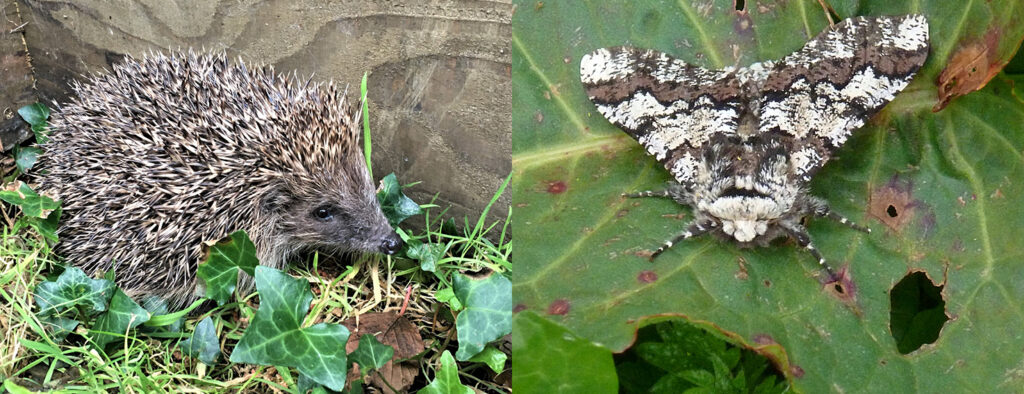Dittiscombe Estate is a remarkable success story about the resilience of nature, we collaborated on this piece with co-owner Ruth Saunders.

Supporters of the CEE Bill, Ruth and Jon Saunders became custodians of the small estate, including a farmhouse and cottages, in 1998 and have spent the years since gifting the residual farmland of 20 acres back to nature, supported by the estate’s income from letting the cottages for holidays in South Devon.
Ruth on joining the Zero Hour Campaign:
“With biodiversity in freefall and dangerously fragmented it’s time to drive through changes which will dramatically alter the way we care for the land and halt our damaging impact on it using ecological restoration (or rewilding) as one of many nature-based solutions available to us. The CEE Bill has the vision to strengthen this endeavour and add other far-reaching solutions to help further reduce carbon emissions.”
With little initial experience Ruth and Jon have achieved something really remarkable in allowing nature to regenerate itself with little intervention and simply for its own sake. In the early days they had plenty of good advice from local conservationists and ecologists who urged them not to ‘tidy up the land’ after they had warnings about ‘pest’ species such as bramble, creeping thistle and horsetail invading the landscape. A substantial woodland planted about 24 years ago with over 4,000 native deciduous trees and some evergreens provided a sound foundation to build on. With a mixture of fast growing trees like larch and pine, and slower growing species such as oak and beech, the differing canopies and tree heights offer varied feeding, nesting and sheltering opportunities for all types of wildlife. The natural watercourse, which runs through the valley, was encouraged to stall and slow into ponds which created layers of vegetation and differing depths of water and a mosaic of wet habitats. These essential building blocks encouraged species of all kinds to come flooding back and as early as 2007 the area was profoundly changed for the better. By 2021 the site around the ‘middle pond’, seen in the image below, has been completely transformed compared to the scarred sterile area it was in back in 1998.

Images: Middle Pond, 1998 and 2021 – Dittiscombe Estate
Dittiscombe It is now a diverse landscape with many wildlife habitats: woodland and hazelcoppices, hedgerows, scrub and meadows, silt traps, scrapes, streams and rills, and a restored orchard planted with local varieties. The wood, after a relatively short time, is now a home or resting place for many new species to the valley – roe deer, woodcock, jays, tawny owls, cuckoo, long-tailed tits, blackcaps and willow warblers to name just a few. The woodland floor (the understory) is naturally populating with young elder and spindleberry, cherry saplings, brambles and ferns. The much maligned brambles are a good supply of late summer nectar for the bees, and food in the autumn for birds and mammals.

Images: Hedgehog and Oak Beauty Moth – Dittiscombe Estate
Leaving cut branches and some coppiced stems, brash piles and messy areas provides important shelter for reptiles, rabbits and other mammals. The coppiced hazel creates open areas where more warmth and light is a magnet for butterflies and bats who prefer the open space for hunting. The new plant and shrub growth around the coppicing provides diversity and height, offering food and nesting sites for animals such as beetles and reptiles, stoats and weasels, wood mice and dormice.
This project proves just how resilient nature is and that given half a chance, it can not only survive but thrive. Dittiscombe Estate also evidences the many benefits that nature can provide for people and the wider environment. There is proof here that it can help combat climate change – its trees, permanent grasslands and wetlands are capable of absorbing significant amounts of carbon as well as holding water in heavy rain, preventing run-off and flooding.
The trees, shrubs, grasslands and wetlands also help purify the air and water supplies – tests have shown that the land is preventing silt, and therefore toxins, from the surrounding farmland from polluting Slapton Ley, a national nature reserve located further down the valley. And not forgetting one of the most important benefits – the feeling of immense wellbeing that comes from being surrounded by such a thriving community of plants, insects, birds and other wildlife – immersed in all of the wonderful sights, sounds and scents of the place.


